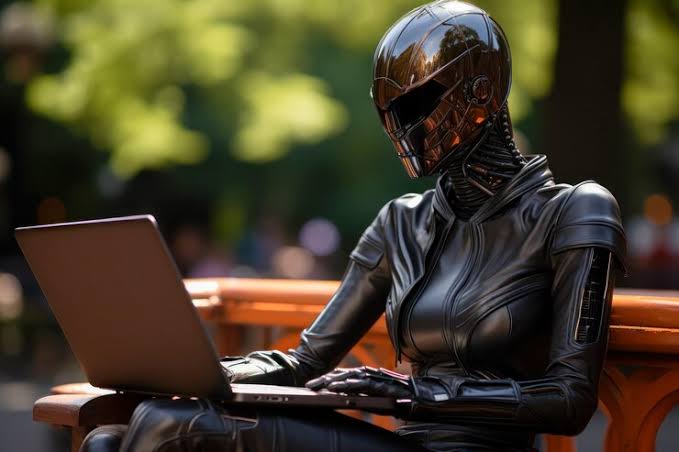The internet has always been a place where people can reinvent themselves, offering anonymity and the chance to explore new identities. In recent years, one trend has emerged that’s catching the attention of many: bl_faceless profiles. These are the accounts or avatars where the user purposefully hides their face, choosing to be known by other visual elements or just their words.
But why are so many people opting to go faceless online? Is it simply a way to stay private, or is there more behind this phenomenon? In this blog post, we’ll take a deeper look into the bl_faceless trend, why it’s growing, and how it’s reshaping online interactions.
What Is bl_faceless?
At its core, bl_faceless refers to a type of online presence where individuals choose not to show their real faces in their avatars, profiles, or social media posts. Instead, they might use illustrations, emojis, or even blank spaces as their profile images. This trend is not about shying away from social interactions but instead represents a new form of expression or protection in a digital world where everyone seems to be exposing themselves.
Why Are People Choosing bl_faceless Profiles?
There are several reasons why someone might go faceless online. Let’s break down the most common ones:
1. Privacy Concerns
In an age where everything you do online can be tracked, saved, or even sold, many people are increasingly concerned about their privacy. Opting for a bl_faceless profile helps keep their identity secure. It’s a way of maintaining a level of control over who sees them and how much of themselves they reveal.
2. Self-Expression Without Judgement
The internet can be a very judgmental place. Sometimes, people feel more comfortable expressing their true selves when they’re not showing their real face. A bl_faceless avatar removes the pressure of being judged based on looks or appearance, allowing users to let their thoughts, creativity, or skills speak for themselves.
3. Breaking the Norms
In a world filled with selfies and personal branding, going faceless can be a statement. It’s a rejection of the constant pressure to be visually present online. Many who choose bl_faceless profiles are sending a message that they don’t need to conform to the typical social media standards.
4. Focusing on Content Over Appearance
For content creators, especially those in the creative or informative fields, the bl_faceless approach allows the audience to focus on the material being presented rather than the person presenting it. Whether it’s a podcast, artwork, or a blog, the focus is on what’s being shared, not on who is behind it.
The Impact of bl_faceless on Social Media Culture
The rise of bl_faceless profiles is quietly changing the way we interact online. Here are a few ways this trend is impacting digital culture:
- Reduced Pressure on Appearance: There’s a growing appreciation for content that isn’t tied to someone’s looks. Platforms like Instagram, TikTok, and YouTube have often been criticized for promoting superficial standards. However, bl_faceless accounts are shifting that narrative, encouraging audiences to focus on substance rather than appearance.
- Increased Focus on Ideas and Content: Without the distraction of a face, ideas and creativity can take center stage. This encourages deeper conversations and more meaningful interactions.
- More Inclusive Communities: Some people feel more welcomed in bl_faceless spaces. When the pressure to fit into certain appearance-based standards is removed, online communities often become more diverse and inclusive.
Should You Go Faceless Online?
If you’re considering adopting a bl_faceless profile, here are a few things to think about:
Pros:
- Increased privacy: Protect your personal identity and stay safe from potential data misuse.
- Freedom of expression: Speak or share content without worrying about being judged for your appearance.
- Less pressure: No need to keep up with the constant posting of selfies or personal photos.
Cons:
- Lack of personal connection: Some people might find it harder to connect with you on a personal level without seeing your face.
- Branding challenges: If you’re a content creator or entrepreneur, not showing your face might make it harder to establish a personal brand.
Ultimately, the decision to go bl_faceless depends on your goals, comfort level, and how you want to present yourself online.
Conclusion
The bl_faceless trend is a fascinating shift in how people navigate online spaces. It’s a reflection of growing concerns about privacy, judgment, and the desire for more meaningful interactions. Whether you’re protecting your personal information, focusing on the content you produce, or making a statement against societal norms, the choice to be faceless online has never been more relevant.
As social media continues to evolve, we’ll likely see even more people embracing this movement and redefining what it means to have an online identity. So, whether you choose to be bl_faceless or not, one thing is clear: the internet is becoming a more diverse place, and that’s something to celebrate.
Frequently Asked Questions
1. What does bl_faceless mean?
The term bl_faceless refers to online profiles or avatars where users do not show their real faces. They use other images, illustrations, or blank spaces to represent themselves.
2. Why do people use bl_faceless profiles?
People opt for faceless profiles for privacy, self-expression without judgment, or to shift focus to content over appearance. It’s also a way of rejecting societal pressures tied to looks.
3. Is it safe to use a faceless profile?
Yes, going faceless can enhance online privacy. However, users should still follow best practices for online safety and be aware that anonymity doesn’t guarantee total protection.
4. Can content creators succeed with a bl_faceless profile?
Absolutely. Many content creators thrive without showing their faces, especially if their work focuses on ideas, storytelling, or other forms of creativity.
5. Are bl_faceless profiles becoming more popular?
Yes, this trend is growing as more people become concerned with privacy and are tired of the pressures associated with appearance-based social media culture.


